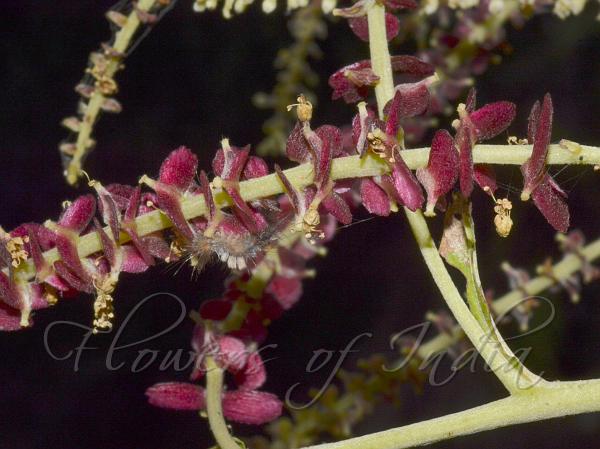|
| East-Indian Almond |
|

|

| File size | 767983 |
| Original date | 11/26/19 4:06 PM |
| Resolution | 2048 x 1536 |
| Flash | Flash fired, return detected |
| Focal length | 60.0mm |
| Exposure time | 1/200s |
| Aperture | 25.0 |
| Focus Distance | |
| Metering Mode | Multi-segment |
| Camera make | NIKON CORPORATION |
| Camera model | NIKON D3200 |
| Sensor type | OneChipColorArea |
|
|
|
|
Photo: |
Botanical name: Terminalia myriocarpa Family: Combretaceae (Rangoon creeper family)
Synonyms: Myrobalanus myriocarpa, Pentaptera saja, Terminalia saja
Synonyms: Myrobalanus myriocarpa, Pentaptera saja, Terminalia saja
East-Indian Almond is a tree up to 20 m tall, with
bark brownish black, longitudinally peeling; branches spreading,
forming tiers; branchlets densely brownish yellow woolly near tip,
densely covered with prominent leaf scars. Leaves are simple,
alternate, crowded into pseudo-whorls at tips of branchlets; leaf-stalk
about 0.5-2 cm, stout, woolly; blade about 12-30 × 8-15 cm, obovate to
inverted-lanceshaped, narrow at base, blunt or with a short sharp point
at tip, entire, both surfaces hairless, secondary nerves 10-12 pairs.
Flowers are borne in simple, long, slender spikes, about 15-20 cm,
numerous flowered, in leaf-axils, axis shortly white woolly. Flowers
are fragrant; sepal-cup tube about 7-8 mm, distally cup-shaped, below
white woolly, densely so on ovary, sparsely so on cup-shaped part,
above hairless; lobes 5; stamens 10, about 2-3 mm, protruding. Fruit is
about 3-5.5 x 2-3.5 cm, red or blackish green when ripe, ellipsoid,
slightly to strongly compressed, strongly 2-ridged to narrowly
2-winged. East-Indian Almond is found in the Himalayas, from Nepal to
Bhutan, NE India, Burma, Thailand, Indo-China, W. China, N. Sumatra, at
altitudes of 600-2100 m.
Flowering: August-September.
| Identification credit: Saroj Kasaju | Photographed in Kalimpong, West Bengal. |
• Is this flower misidentified? If yes,